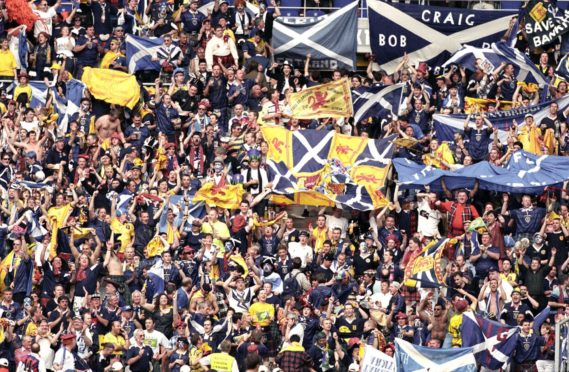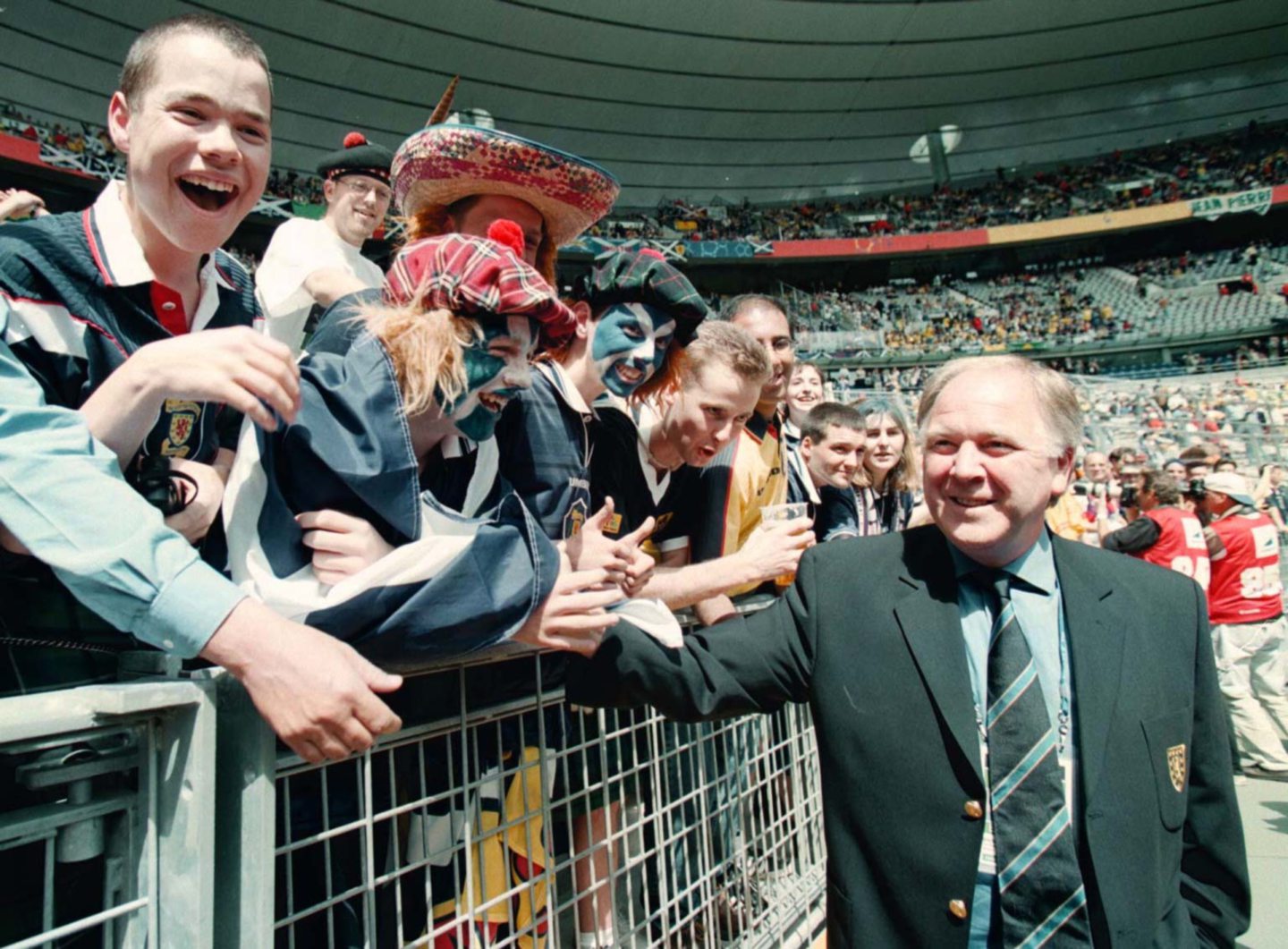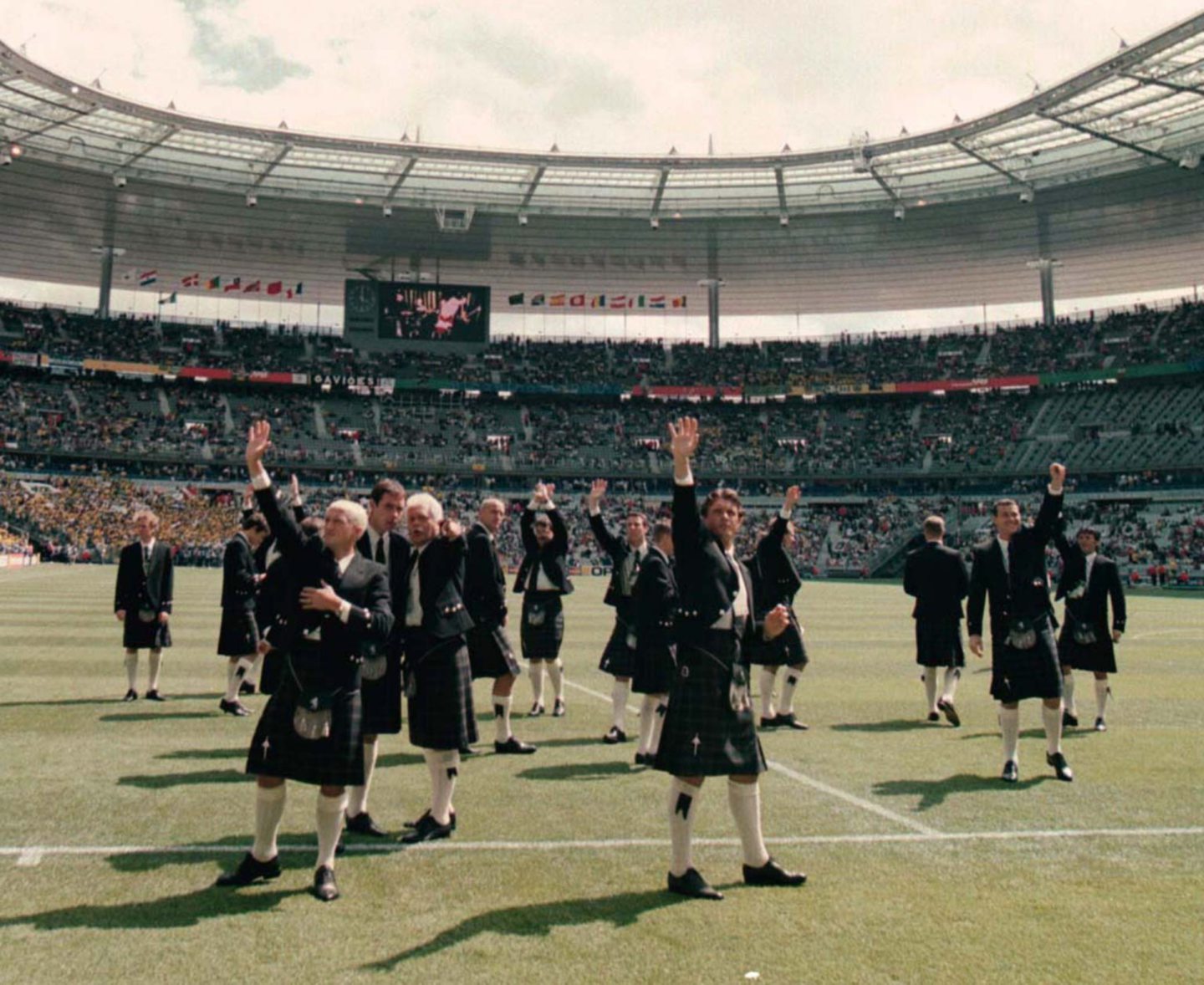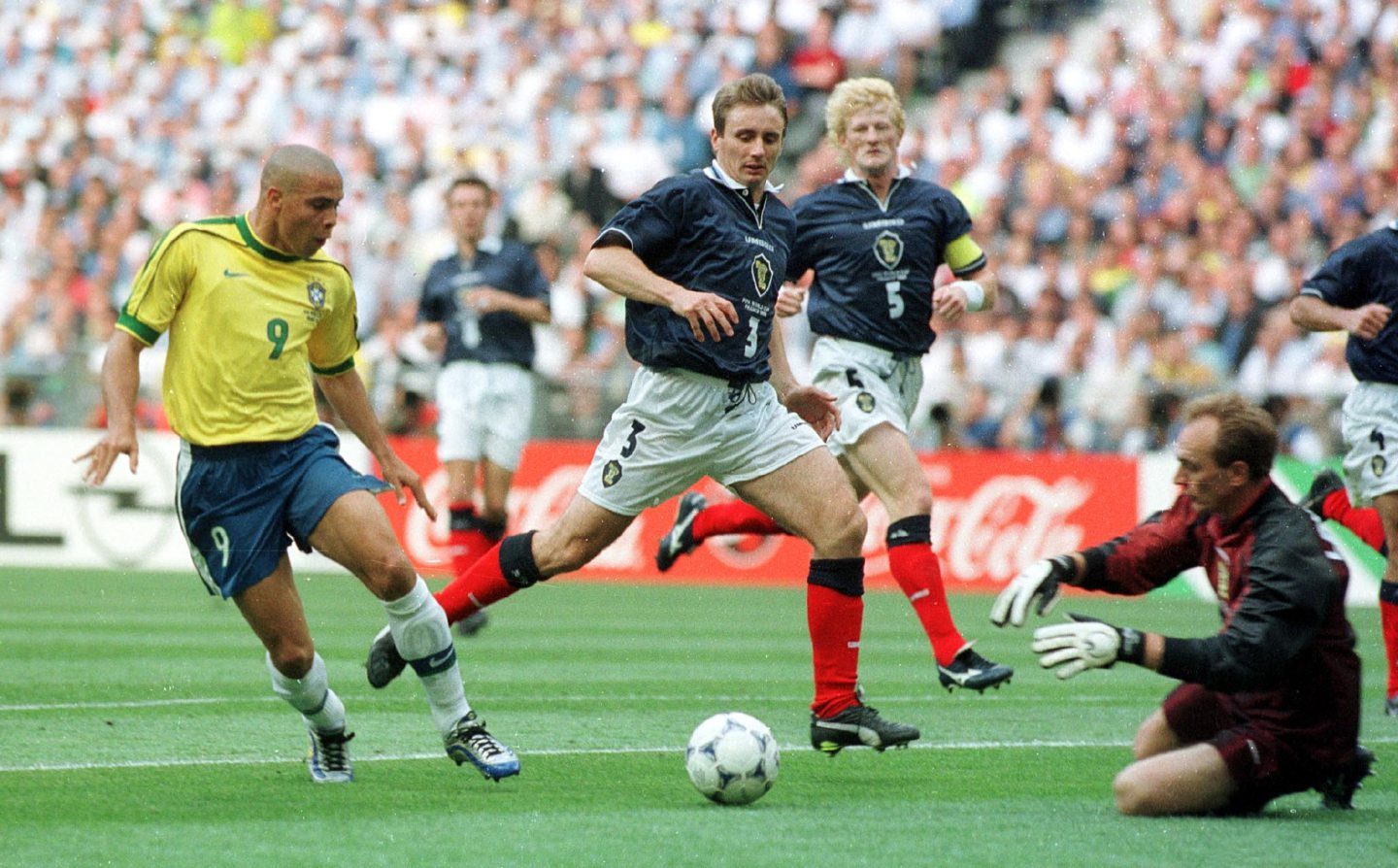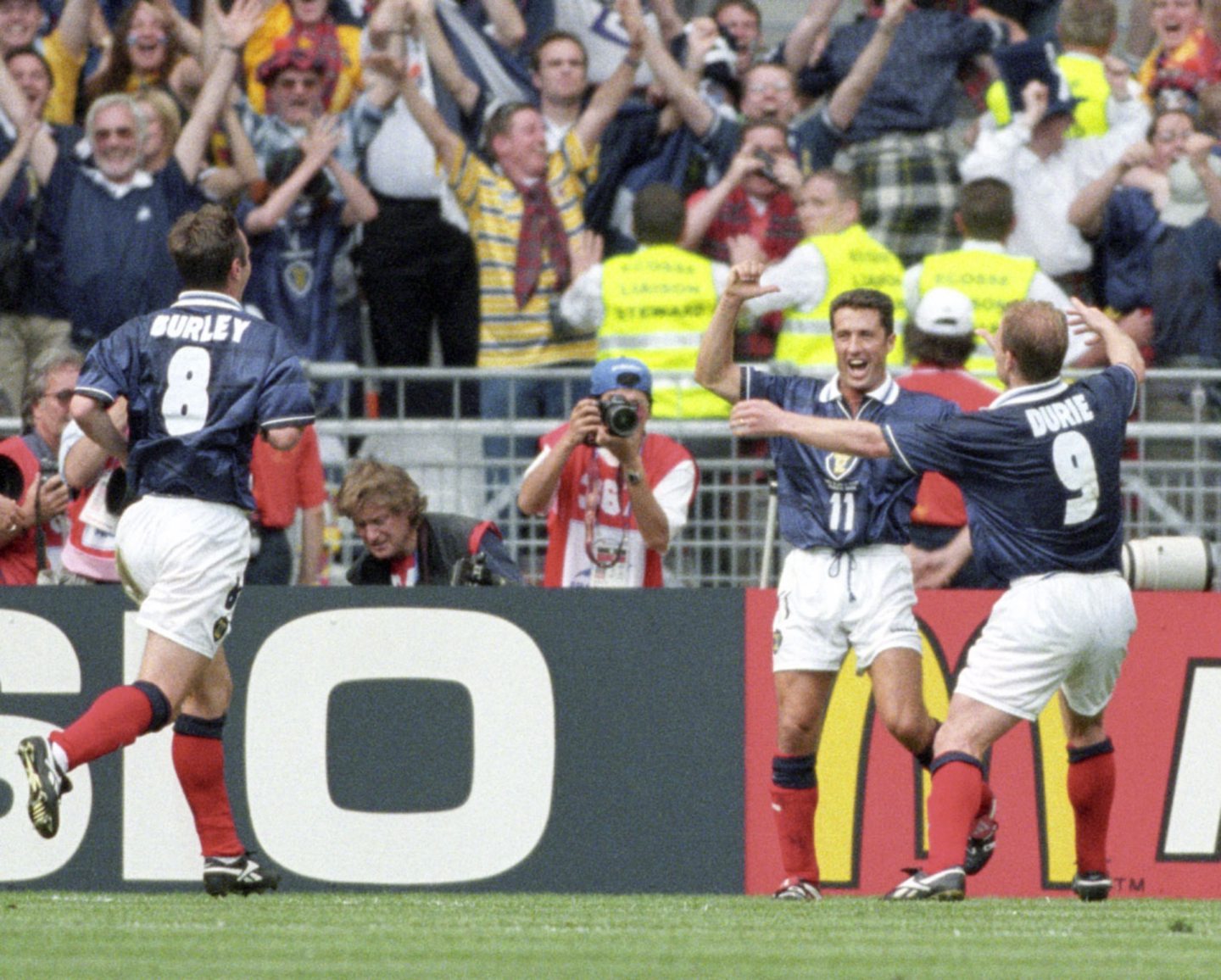Scotland have finally qualified for a major tournament, with their penalty shoot-out heroics in Serbia ending a drought of more than 20 years. And it’s time to get excited for the Euros.
Uefa are on record as saying they’re hopeful the battle against the Covid-19 pandemic will have progressed to the point where Scotland’s group D games – against the Czech Republic and Croatia at Hampden, and England at Wembley – can go ahead with fans next June.
The Tartan Army will be praying this is the case, during what will be a unique 12-city European Championships. The Auld Enemy under tournament conditions? Two games in Glasgow? Yes please.
To get your mouth watering at the prospect of major tournament football once more involving the Dark Blues, this time so close to home, we’ve decided to look back on the carnival atmosphere of Scotland’s last tournament opener – against Brazil at the France 1998 World Cup.
This was the last time you could say with confidence Scotland were at the very centre of the multi-billion-pound industry that is football, facing the reigning world champions, in the competition opener, in front of two billion TV viewers from 115 countries across the planet.
And Scotland made an impression. Will they do so again?
The Tartan Army bring the noise to Paris
The Scots met the Brazilians in Group A at the Stade de France on June 10.
The night before the game, then-Prime Minister Tony Blair was helicoptered in to the team hotel to bid Craig Brown and his squad good luck.
Aberdeen were represented in Brown’s squad by goalkeeper Jim Leighton, who started between the sticks, while defender Derek Whyte was in the 22-man group selected for the finals.
The Scotland squad made a big impression pre-match when they took to the pitch in kilts after arriving at the stadium.
In 2018, Brown told the Evening Express he relaxed his team by pointing out Brazil’s tradition of holding hands meant they were terrified of the Dark Blues.
However, Scotland didn’t make a good start to the game and fell behind after four minutes.
Bebeto’s in-swinging corner from the left found Cesar Sampaio, who nodded in with relative ease at the front post.
Brazil looked for a quickfire second. However, Roberto Carlos and then Ronaldo were both denied by good stops from Leighton.
On 37 minutes Sampaio went from saint to sinner as he pulled down Kevin Gallacher in the box and John Collins stepped up to fire the resulting penalty past keeper Claudio Taffarel.
Cue pandemonium in the Scotland section.
In the second period, the Scots performed well and caused some problems, but with 18 minutes left their luck was out.
Dunga’s chipped pass picked out Cafu, who had stormed into the area down the right side. Leighton made a fine block, but the loose ball bounced off the unfortunate Tom Boyd and trickled into the net to give Brazil the points.
No matter. The result of the game in France has never taken the shine off the occasion.
Scotland held their own and almost got a result against a team led by Ronaldo, a generational talent, then the best player in the world.
Brown, who watched Brazil nine times in preparation for the games, detailed Scotland’s tactical approach in this Press and Journal interview:
Long read: How Craig Brown set-up Scotland to tackle Brazil’s Ronaldo at France ’98
In the piece above, Brown described the hysteria around the Dark Blues participation in a major tournament and what it is like to be at the epicentre of the first match. It makes for exciting reading.
It is something which we will likely see again as the Euros draw closer for Steve Clarke and his Belgrade heroes.
Brown said: “The focus was always on playing the game and not the occasion. We tried to block out the build-up and look only at the opposition.
“The ticket scramble was horrendous. I’ve always wanted to ensure my players don’t feel inferior to any of their opponents, so I would try to find out how many tickets other countries were getting.
“I asked Colin Hendry to speak to Alan Shearer, his Blackburn team-mate, to see what the England players were getting. If Shearer came back saying six complimentary tickets and the chance to buy 10, I’d tell (then SFA president) Jim Farry that England were getting eight comps and could buy a dozen so my players felt they were treated well.”
“The kilts we wore went down well – and not just with the Scotland supporters, the Brazilians loved it too.
“The build-up went as well as we could have hoped for, but it all went downhill from there.
“Our boys were immaculate for the anthems, every player had his shirt tucked in. That was the sort of thing we focused on.
“We could control our appearance, our attitude and our behaviour, but we couldn’t control victory.”
